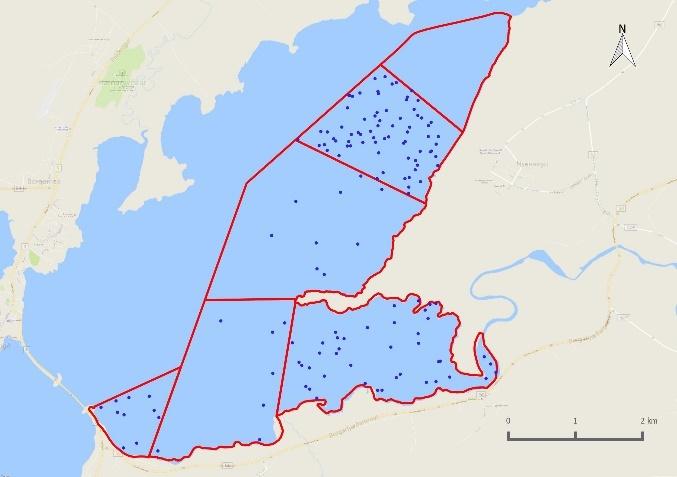
3 minute read
Lesser Black-backed Gull
Lesser Black-backed Gull
Larus fuscus Sílamáfur
Two Lesser Black-backed Gulls were observed in the fjord on the 1st March, at a time when it was still frozen, and before this survey had formally started. Between April and October, in the region of 10 –30 birds were recorded in the survey area on each survey, but there were several surveys when much larger numbers (60 – 100 birds) were recorded. The reasons for these influxes, which occurred mainly during low time surveys, is not known.
Two to three pairs of Lesser Black-backed Gull were present at the Great Black-backed Gull colony in Ásgarđshöfđi (Est 4) during the summer months, but it is not known whether they nested successfully or not, as the island was not visited and observations were made from the closest elevated vantage points 1.5 to 2 km away. Due to the undulating topography of the island, and the cryptic nature of juvenile gull plumage, it was not possible to ascertain the presence of incubating adults or chicks. Similarly, Lesser Black-backed Gulls were present on the island on Lake Vatnshamravatn during April, where Great Black-backed Gulls nested, but no dedicated survey was undertaken to ascertain breeding status.
Lesser Black-backed Gulls were distributed throughout the survey area during low tide and rising tide surveys. The four southernmost subsites: Flæðhöfðasker (Est 6), Grjóteyrarklakkur (Est 1), Kistufjörđur (Est 2) and Kistuhöfðahólmar (Est 3), were mainly used for foraging during low tides and for both roosting and foraging during rising tides.
Number of individuals 100 80 60 40 20 0 Low-tide Rising-tide

10 11 12 13 14 15 16 17 18 19 20 21 22 23 24 25 26 27 28 29 30 31 32 33 34 35 36 37 38 39 40 41 42 43 Mar Apr May Jun Jul Aug Sep Oct Week number and month
Figure 3-127. Number of Larus fuscus recorded during weekly low tide and rising tide estuarine surveys in the Andakíll Ramsar site between 12th March and 25th October 2017.
(a) Low tide (b) Rising tide
Figure 3-128. Relative abundance of Larus fuscus during weekly (a) low tide and (b) rising tide estuarine surveys in the Andakíll Ramsar site between 12th March and 25th October 2017. Dots are randomly positioned within each subsite. While each dot refers to a single bird, it refers to the bird’s presence in that subsite only, and not the bird’s actual location.

Figure 3-129. Relative abundance during (a) spring and (b) autumn of Larus fuscus counted on twiceweekly estuarine surveys in the Andakíll Ramsar site in 2017. Spring = 12th March - 7th June; Autumn = 12

(a) Spring (b) Autumn

th June - 25th
October. The number of dots in each subsite refers to the total number of bird-records (from weekly low tide and rising tide surveys) in spring and autumn, adjusted for the length of the season, and reflects the species’ abundance in that season, not the specific location of birds.
Figure 3-130. Proportion of foraging and roosting Larus fuscus during weekly (a) low tide and (b) rising tide estuarine surveys in six subsites in the Andakíll Ramsar site between 12th March and 25th October 2017.

(a) Low tide (b) Rising tide












